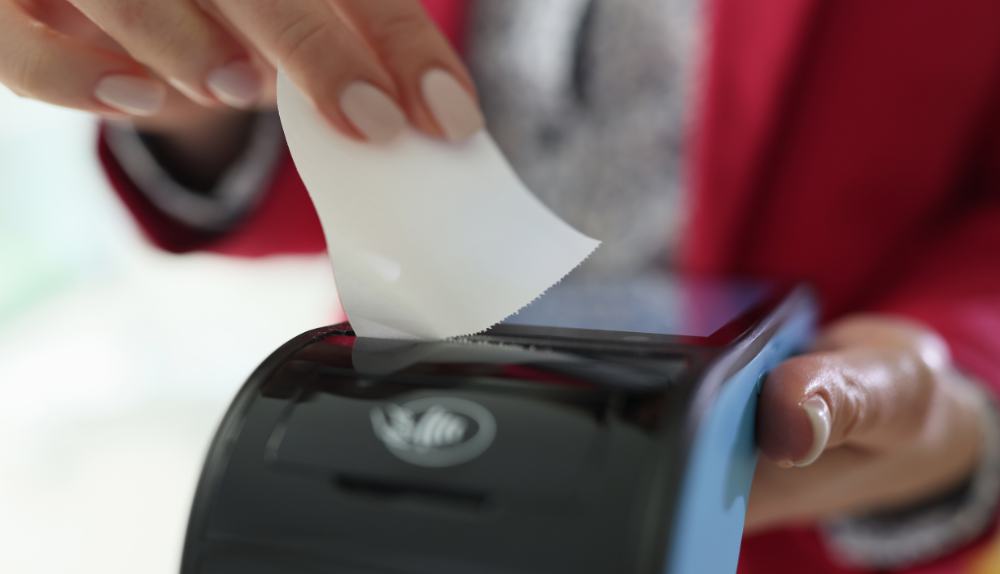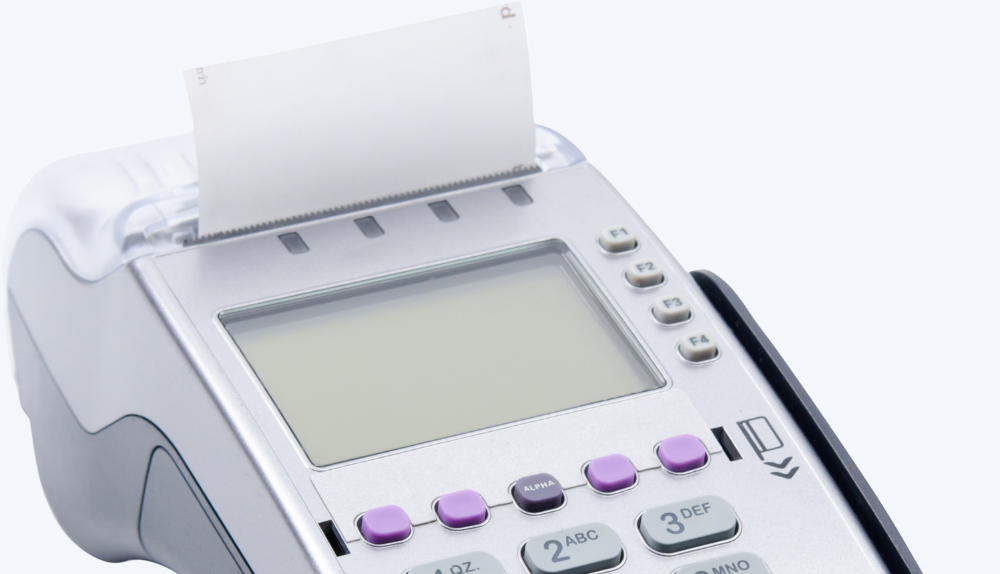
By max July 14, 2023
A merchant has to process different numbers and a significant volume of information every day. On a transaction receipt, the invoice number, merchant’s name, payment details, and other figures are mentioned. Among these, you will find a transaction ID. Know what is a transaction id and why is it important in each transaction?
A transaction ID refers to a few-digit code that’s allotted to each transaction taking place between a customer and a business. Each ID is unique and is used to track the transaction should any conflict arise in the future. This computer-generated ID is forwarded to the payment processor when a customer initiates a transaction. The main purpose of this ID is to simplify each transaction.
Customers get the transaction ID printed on the receipt or via email. Either way, every transaction comes with a unique ID that can help the payment processor and the merchant to track each transaction. Let’s learn more about transaction IDs, how they are used, and how they are generated.
What is a Transaction ID?
A transaction ID is a unique alphanumeric code that helps in the identification of a transaction, including payment through the digital wallet, cash, or cryptocurrency. Simply put, it’s like a reference number that enables merchants to find all details regarding a particular transaction in one place. For instance, if a customer issues a chargeback request for a product they didn’t purchase, you can track all information about the product, such as its delivery date, payment details, etc. through the transaction ID.

You can find transaction ID near other data, such as the invoice number, payment amount, delivery date, order date, merchant’s name, etc. The number is randomly generated and its format could vary depending on your payment processor. As mentioned previously, this identifier is used to keep a record of each transaction. It can be used as proof that a specific amount was sent or received. In case of any discrepancies, both parties can use the transaction ID to clarify the issue.
Importance of Transaction ID
A merchant conducts hundreds of transactions every month. It’s hard to remember each customer or the products they bought from your store. That’s why a unique transaction ID is assigned to each purchase so that customers and merchants can access any kind of information related to any transaction within seconds. This also comes in handy if someone issues a dispute or a chargeback request. Transaction ID ensures that customers’ and merchants’ interests are protected.

In addition to security, transaction IDs are useful in accounting. When a merchant drafts their financial statements, they can use transaction ID to track each sale, revenue, and other data flawlessly. Likewise, for customers, transaction IDs serve as proof of purchase. If they want to return the product later or file a dispute, they won’t be able to do that without a transaction ID.
Suppose a customer files a chargeback request to reverse a transaction that was processed by a fraudster. They ask you to refund them. Now, how do you know which customer it is, what they bought from your store, and how much you need to refund? That’s where the transaction ID comes into the picture. The bank can use this ID to find information about the transaction, investigate it, and take action. Similarly, a merchant can locate a specific transaction easily through this unique code.
Here’s what a transaction ID helps you track:
- The listing price of the product
- How much the customer paid
- How the customer made the payment, i.e. through cash, debit/credit card, digital wallet, or other methods.
- Payment ID
Considering the importance of a transaction ID, it’s obvious that these 12-18 digits are not optional. Each transaction, no matter the size, must come with a receipt that has the transaction ID mentioned.
You may not need the transaction ID generally, but if any issue arises, you must know where to find the transaction ID. It helps keep the merchant, payment processor, and customer on the same page regarding the transaction details. When you request a refund, your point-of-sale system or the computer that processes transactions will need the transaction ID to issue a refund and record it in your accounts.
The role of a transaction ID is not confined to security. It plays a pivotal role in your sales and marketing. This unique series of alphanumeric codes helps you track the transaction details, which in turn, give you accurate stats about how often a product is purchased, which product is performing well, and your customers’ spending habits.
Where to Find Your Transaction ID?
You can easily locate a transaction ID. It’s either on the invoice or the receipt. Here’s how to find it.
- Receipt: The transaction receipt, which is either forwarded to the customer through email or in physical form, has a transaction ID. For merchants, you can collect this information from your payment gateway, a copy of the receipt, or an email reference. You can reach out to your payment service provider if you are unable to find the transaction ID.
- PayPal: For those who have processed the transaction through PayPal, the TID can be found in the email receipt. The transaction ID issued by PayPal is different from the normal TIDs. It is 17 characters long. You can also locate it in the transaction history of PayPal. Each transaction has a unique transaction ID.
- Google Wallet: For every transaction processed through Google Wallet, you will receive an email receipt confirming your payment. This includes the transaction ID. It also shows up on the transaction confirmation page once the transaction is completed.
Other than these, payments made through cryptocurrency also come with a transaction ID that can be located in the crypto wallet.
Can an Unauthorized User Access Transaction ID?
Each transaction ID has unique and randomly-generated numbers, which can only be accessed by the merchants, customers, and the payment processor. Other than the parties involved in the transaction, no one can trace this information.
The ID contains customers’ confidential data, such as their names and address. While it’s possible that someone can get access to this data, it’s very rare. The only way an unauthorized user can locate a transaction ID is if they have the exact number or access to the computer that completed the transaction.
You might wonder if someone can conduct a security breach through a transaction ID. Well, yes, but only if they can access it in the first place. Whichever payment method the customer chooses, they will get a receipt or confirmation email containing this unique transaction code. Since the receipt is sent to the customer’s registered email, there’s no way an outsider can trace it unless they have already hacked into the customer’s email.
How Does it Help in Chargeback Management?
As mentioned above, having a transaction ID is crucial in chargeback management. A bank can easily investigate all information about a specific transaction using its unique ID. If you don’t have the transaction ID, you won’t be able to prove the purchase a customer made and will end up paying the requested refund amount.
When a merchant decides to dispute a chargeback, they need to gather proof of the transaction. This consists of the transaction ID, payment ID, invoice number, and other details as requested by the card network. Failure to submit this information will end the dispute in the customer’s favor. That’s why businesses are focusing more on keeping the transaction ID and other relevant information handy. If any dispute arises, they can prove their point using these numbers.
The biggest benefit of transaction ID in managing chargeback is that it keeps the chargeback ratio down. Without the necessary evidence, customers can file just about any dispute and might win it. This ID also makes the chargeback process easier.
As mentioned above, the card network allows the merchant a specific period to fight the chargeback with sufficient evidence. Having a transaction ID handy means you can prove that the transaction was legitimate. Even if you don’t directly attach the transaction ID to the rebuttal letter, you will need this to access information about the transaction, which is submitted to the card network.
What Does It Look Like?
A transaction ID is a computer-generated alphanumeric code, the composition of which varies greatly depending on the payment processor. PayPal, for instance, has its own TID composition. Usually, it is the combination of uppercase and lowercase letters and digits. It can be as long as 64 characters, but most transaction IDs are no longer than 17 characters. They start with T or I, followed by a series of letters and digits. You can check your receipt or the invoices to get a better understanding of the transaction ID.
Bottom Line
Each transaction requires a unique ID, which is printed on the transaction receipt or the email confirmation. It’s important to prevent the risk of fraud chargeback requests. The ID is encrypted, which means only the parties involved in the transaction can access it.
